
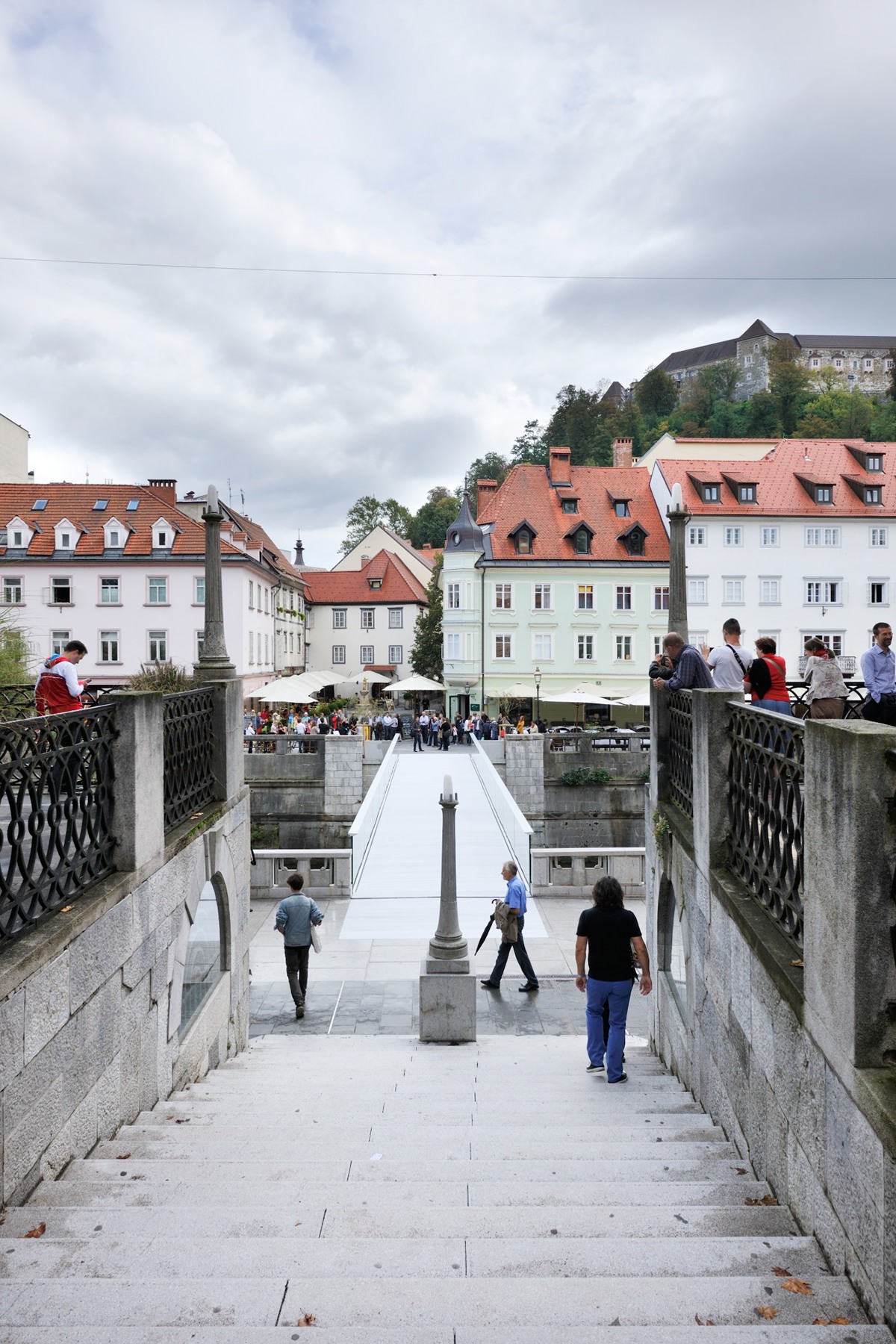
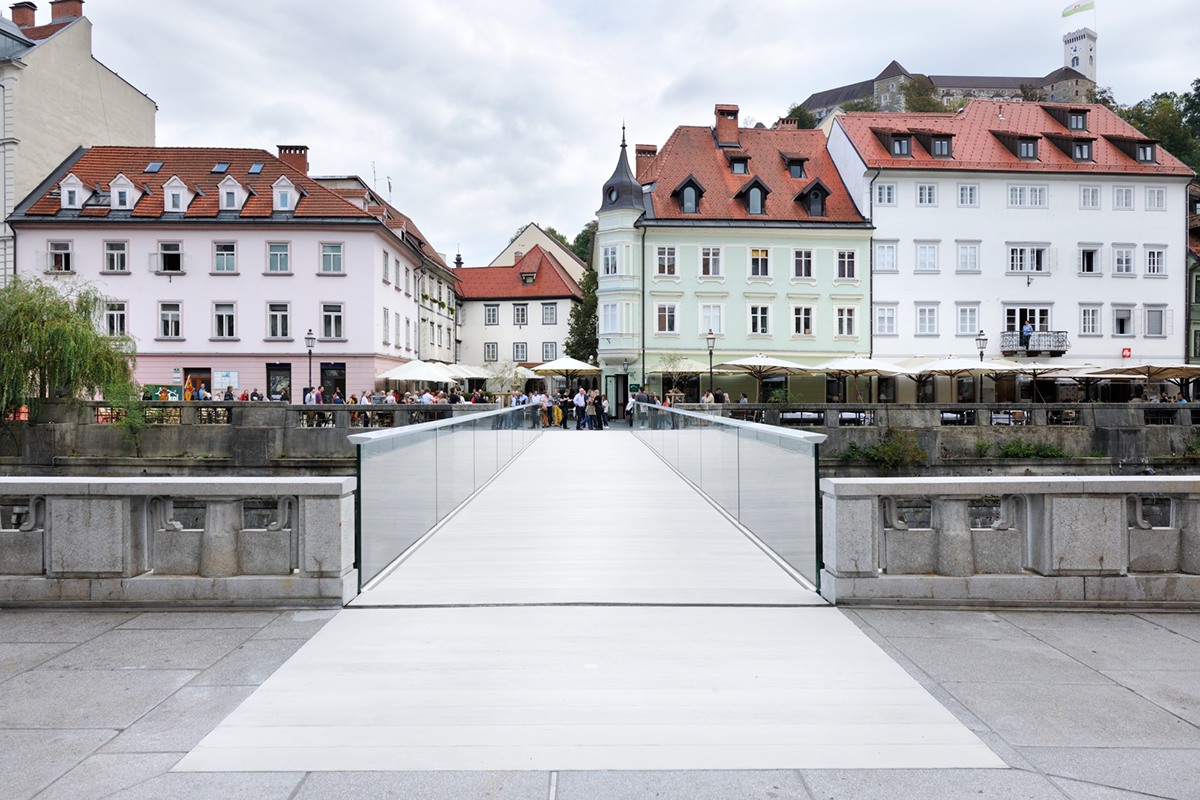
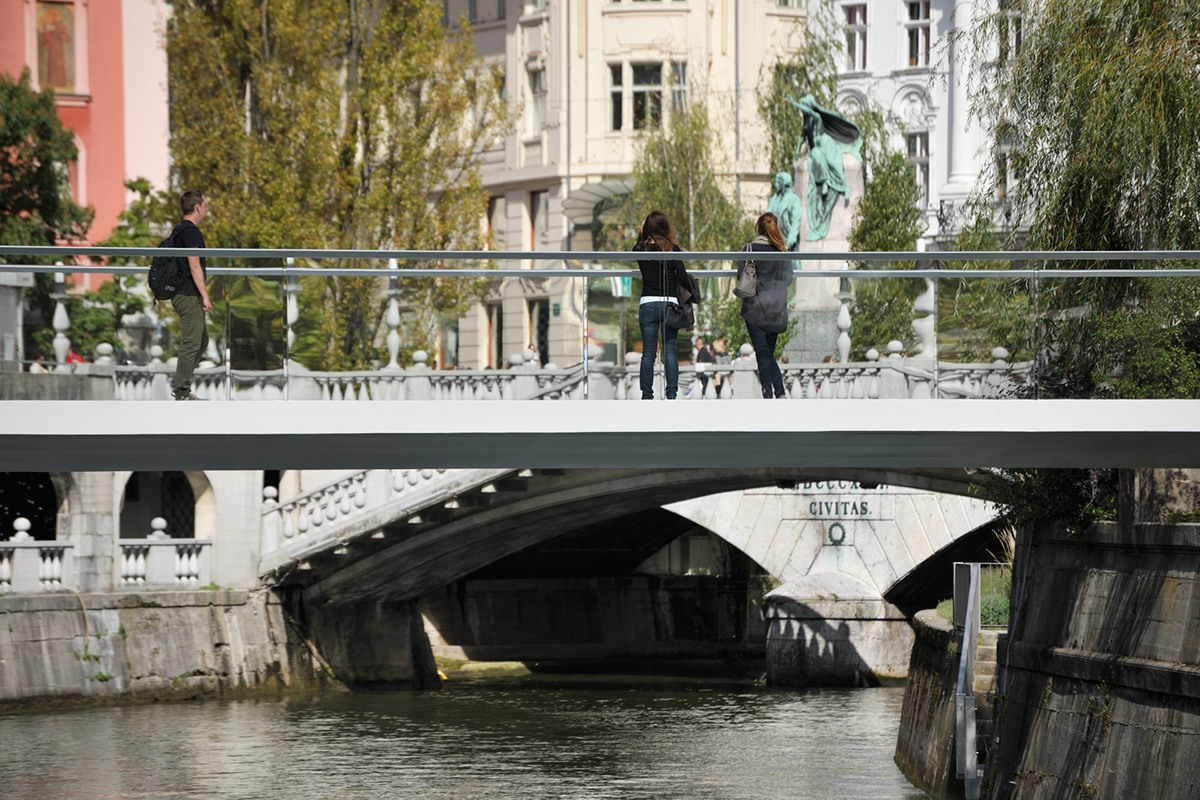

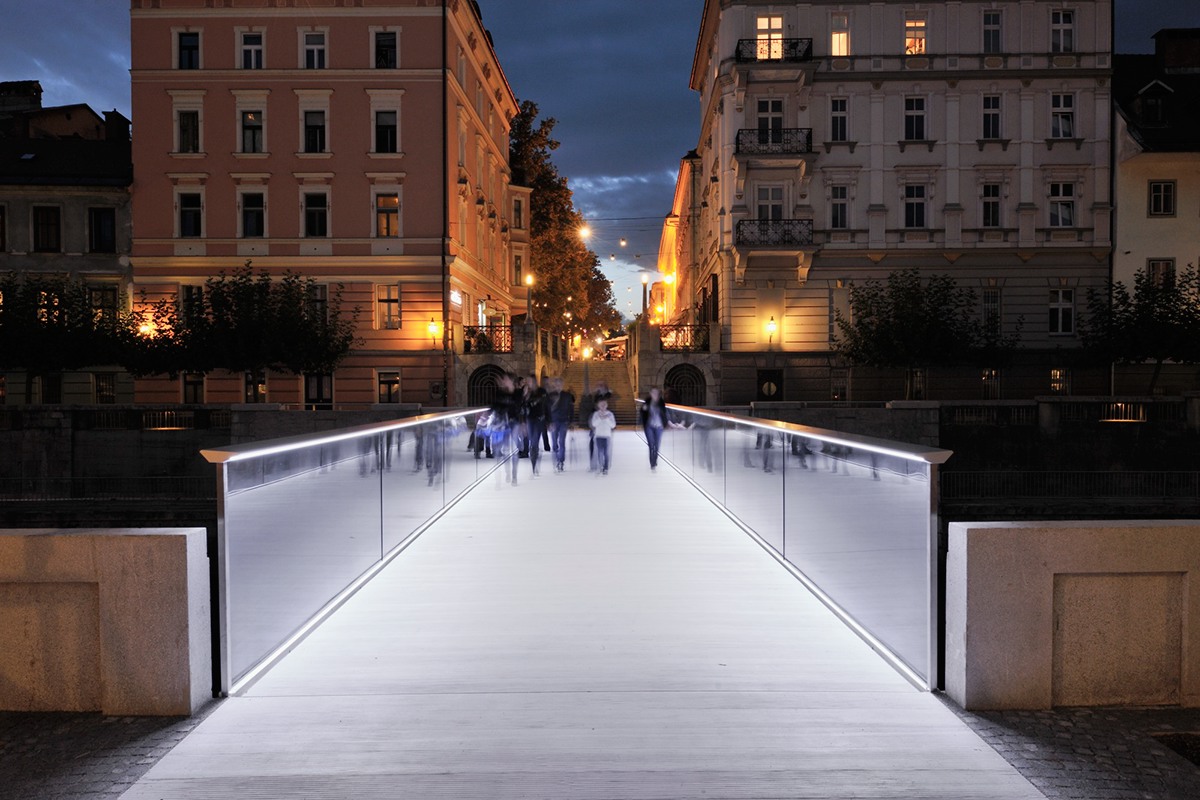
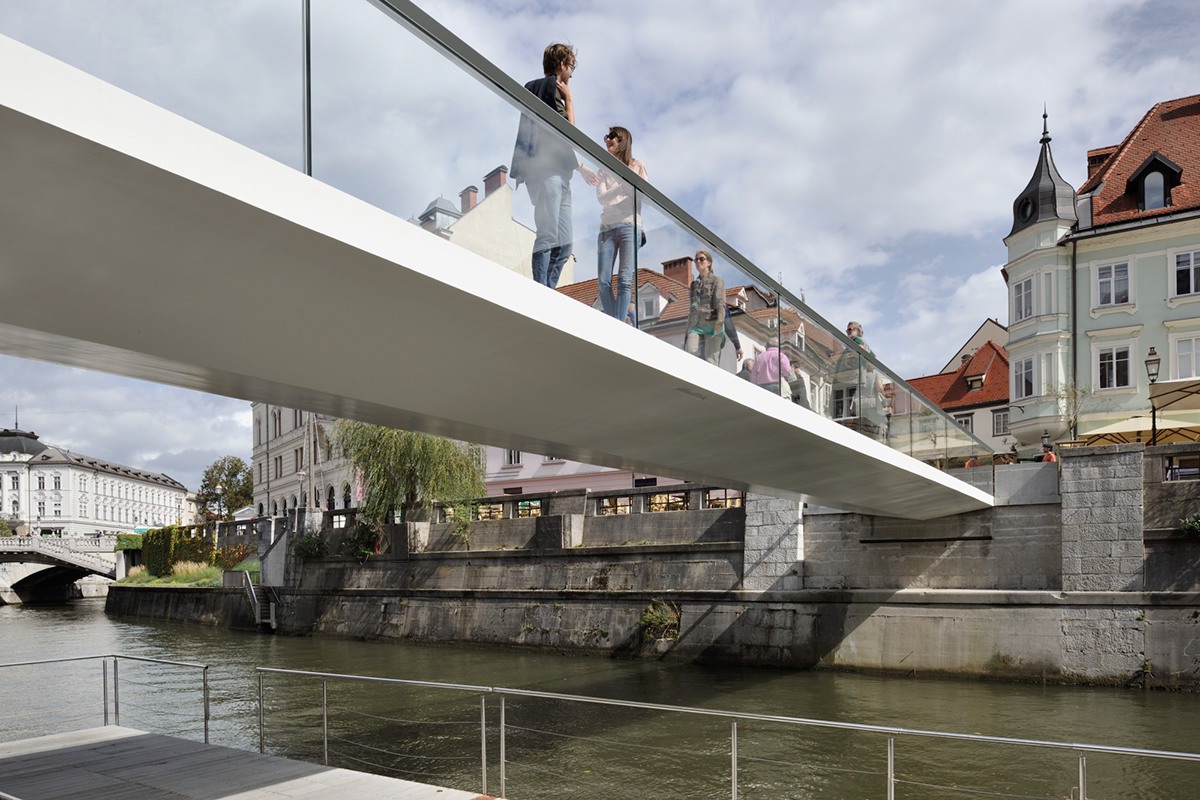

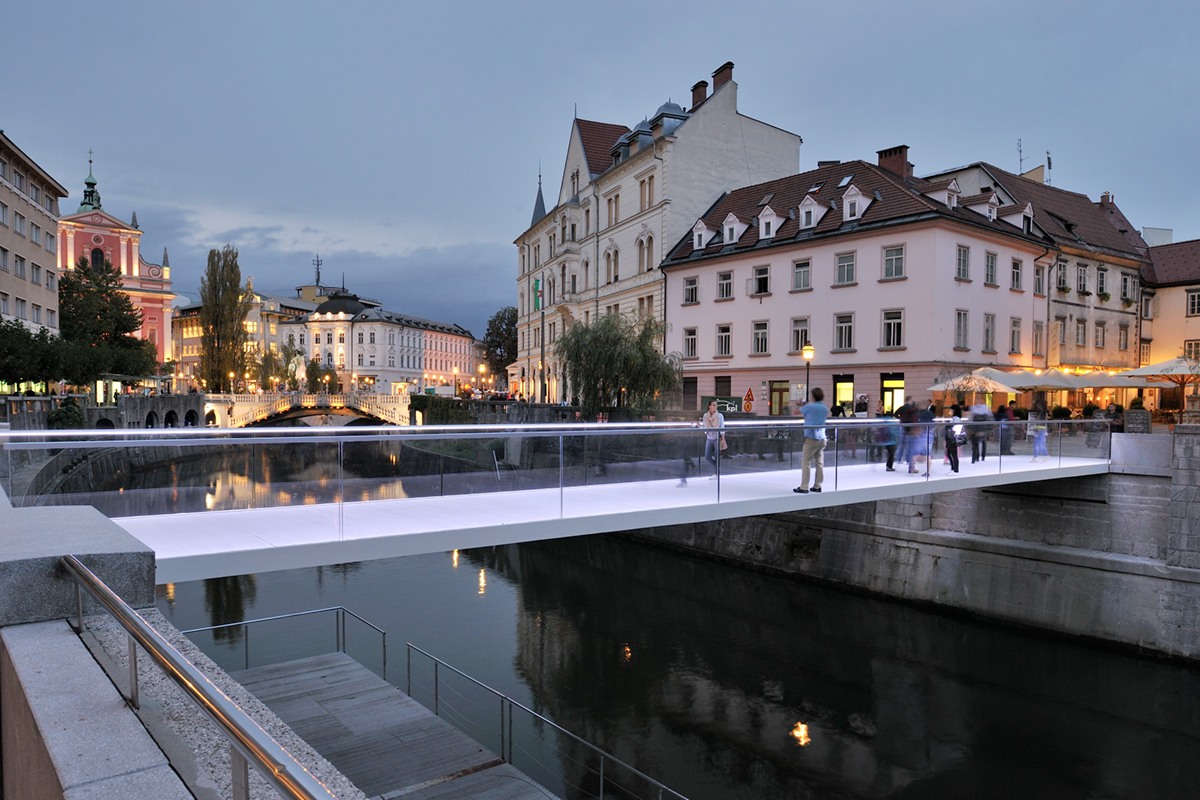
It is often believed that Plečnik was inspired by Venice and its bridges in his rearrangement of Keller’s concrete river bed of Ljubljanica. What exactly Plečnik had in mind, we do not know today but one thing is certain: due to Plečnik’s interventions the ambience and layout of Ljubljanica riverside has a Venetian flair. As in Venice, Plečnik envisaged and placed several new bridges over the river. Two of them, namely the Triple Bridge and the Shoemakers’ bridge, were realized as public areas, new public spaces, which were liberated from the river and given to the citizens.
Plečnik also planned and partially realized the bridge access for the Butchers’ bridge and the ‘’Fishmarket ‘’ footbridge (the footbridge between Ribij trg square and Gerber stairway). While the recently built Butchers’ bridge has a modern image, the Fishmarket footbridge awaits its new solution.
What should, therefore, this footbridge be like? Plečnik already determined its width with his arrangement of the riverside, while the river determines its length. Taking into consideration the formal language of the neighboring bridges, the Shoemakers’ bridge and the Triple Bridge, which are designed in a “Neo-Renaissance” manner of plasticity, we can assume that Plečnik’s footbridge would have been formally rich and prominent. Would he have built it as a decorated concrete deck or as a shallow arc construction? Who knows?
Out of respect to the memory of the master and his artistic authority, the idea of linking the two squares, the Congress and the Fishmarket square, an unfulfilled desire for a long time.
Plečnik also planned and partially realized the bridge access for the Butchers’ bridge and the ‘’Fishmarket ‘’ footbridge (the footbridge between Ribij trg square and Gerber stairway). While the recently built Butchers’ bridge has a modern image, the Fishmarket footbridge awaits its new solution.
What should, therefore, this footbridge be like? Plečnik already determined its width with his arrangement of the riverside, while the river determines its length. Taking into consideration the formal language of the neighboring bridges, the Shoemakers’ bridge and the Triple Bridge, which are designed in a “Neo-Renaissance” manner of plasticity, we can assume that Plečnik’s footbridge would have been formally rich and prominent. Would he have built it as a decorated concrete deck or as a shallow arc construction? Who knows?
Out of respect to the memory of the master and his artistic authority, the idea of linking the two squares, the Congress and the Fishmarket square, an unfulfilled desire for a long time.
It was not until the wooden temporary arrangement was set up, which was initiated by the students of architecture from Ljubljana, and proved to be a courageous and, at the same time, a non-controversial deed. It pointed to the vital necessity of the new
bridge connection, but at the same time – due to its temporary nature – it did not offend the legacy of the great master. That is why people did not judge its aesthetic aspects but merely praised its usefulness. Over the years the wooden construction of the bridge has decayed, so a new, permanent solution has to be found.
What should therefore the new footbridge be like? If we are looking for a solution in the new spatial and program formats, then the possibilities are countless; and vice-versa, if we want to emphasize simplicity and discretion, all solutions are pointing toward a single final solution.
The question arises, how to realize Plečnik’s idea? Should one design a prominent authorial object with a strong presence in the river corridor, or just the opposite, a discreet, quiet architecture, which dwells over the river almost as an immaterial idea of a bridge? Both solutions are possible and legitimate.
What should therefore the new footbridge be like? If we are looking for a solution in the new spatial and program formats, then the possibilities are countless; and vice-versa, if we want to emphasize simplicity and discretion, all solutions are pointing toward a single final solution.
The question arises, how to realize Plečnik’s idea? Should one design a prominent authorial object with a strong presence in the river corridor, or just the opposite, a discreet, quiet architecture, which dwells over the river almost as an immaterial idea of a bridge? Both solutions are possible and legitimate.
In our opinion the footbridge is certainly necessary on this location, but the space is very much saturated with Plečnik’s own legacy, so that it seems reasonable not to compete with the master in the formal domain; just as was the case in the new NUK building.
It was our suggestion, therefore, to place a transparent, elegant footbridge of minimalist design over the river, one which will allow unobstructed views along the river but at the same time connect both banks as a wide viewpoint over the river.
Our aim was to design a bridge that has a construction as thin as possible, and bridge railing as transparent as possible. In this project we used all our previously gained experience with steel construction design and realization, as well as the use of new materials and technologies.
As mentioned, in this kind of approach all solutions lead towards a final form, where it is impossible to take anything away or further thin down the construction and thus the shape. This makes solutions of this kind similar and the achievements are measured in terms of centimeters and decagrams – while in terms of form, despite the small differences – they contribute to the elegance of the design.
It was our suggestion, therefore, to place a transparent, elegant footbridge of minimalist design over the river, one which will allow unobstructed views along the river but at the same time connect both banks as a wide viewpoint over the river.
Our aim was to design a bridge that has a construction as thin as possible, and bridge railing as transparent as possible. In this project we used all our previously gained experience with steel construction design and realization, as well as the use of new materials and technologies.
As mentioned, in this kind of approach all solutions lead towards a final form, where it is impossible to take anything away or further thin down the construction and thus the shape. This makes solutions of this kind similar and the achievements are measured in terms of centimeters and decagrams – while in terms of form, despite the small differences – they contribute to the elegance of the design.
